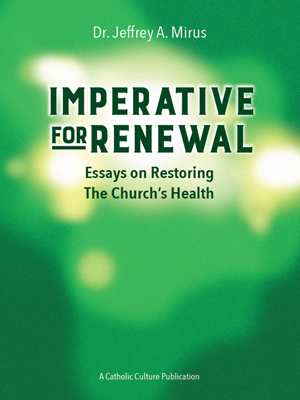Dan Brown's theories at Harvard Divinity School: the tale of a scam
By Phil Lawler ( bio - articles - email ) | Jun 20, 2016
If you enjoy a good real-life detective story, I strongly recommend this excellent article from The Atlantic, by Ariel Sabar. It’s a fine piece of investigative journalism, exposing an astonishing scam.
The scam was possible, I submit, only because so many people—and particularly people who think of themselves as intellectually sophisticated—are quite ready to believe anything about Jesus Christ except what the Gospels tell us.
In 2012, a Harvard Divinity School professor introduced a small fragment on which, in ancient Coptic, someone had written that Jesus had a wife. The discovery prompted an orgy of speculation by the folks who enjoy re-writing Church history: Maybe Jesus was married! And maybe his wife was Mary Magdalene! And maybe the early Church suppressed the evidence! And maybe the potboiler novels of Dan Brown are really non-fiction!
Sober scholars were more skeptical. The Vatican newspaper L’Osservatore Romao called the papyrus “a fake,” and then, enlarging on the theme, an “inept forgery.” Two of the three professors who reviewed a paper on the discovery for the Harvard Theological Review recommended against its publication. Even Professor Karen King, who called the press conference to publicize the papyrus (while her colleagues were still questioning its provenance), was prudent enough not to stake her scholarly reputation on its authenticity.
But the mass media did not share the qualms of the professional scholars. The Smithsonian Channel hyped the papyrus as “one of the most significant discoveries of all time,” and—after waffling a bit under the weight of criticism went ahead with a documentary. Perhaps carried away by the opportunity for some rare mainstream publicity, the Harvard Theological Review, which had postponed publication of Karen King’s article, finally decided to print it.
Meanwhile the evidence that the document was a fraud continued to pile up-- but slowly. It isn’t easy to prove a negative, after all, and no one was offering to make a television documentary about a non-story. So Karen King and her supporters could persist in saying that the papyrus could be authentic, and its cryptic message might be of earth-shaking importance, so we should continue discussing it—even if there were odd grammatical errors in the Coptic prose, and even if the message seemed to be copied from another document, and even if there was no evidence anywhere to establish the authenticity of King’s ballyhooed discovery.
Then along came Ariel Sabar, to conduct an exhaustive investigation that tells the real story about that “ancient” papyrus fragment. It turns out that the key character in the story, the man who claims ownership of the papyrus fragment, is a shady character, a sometime pornographer, who wants to write fiction and wants to promote the Gnostic argument against orthodox Christianity.
How did this Dan Brown wannabe manage to recruit Karen King, the Smithsonian Channel, and the Harvard Theological Review to participate in his publicity stunt? It’s hard to avoid the conclusion that were easy targets for a con because they were so anxious to believe the story that he was selling.
All comments are moderated. To lighten our editing burden, only current donors are allowed to Sound Off. If you are a current donor, log in to see the comment form; otherwise please support our work, and Sound Off!









